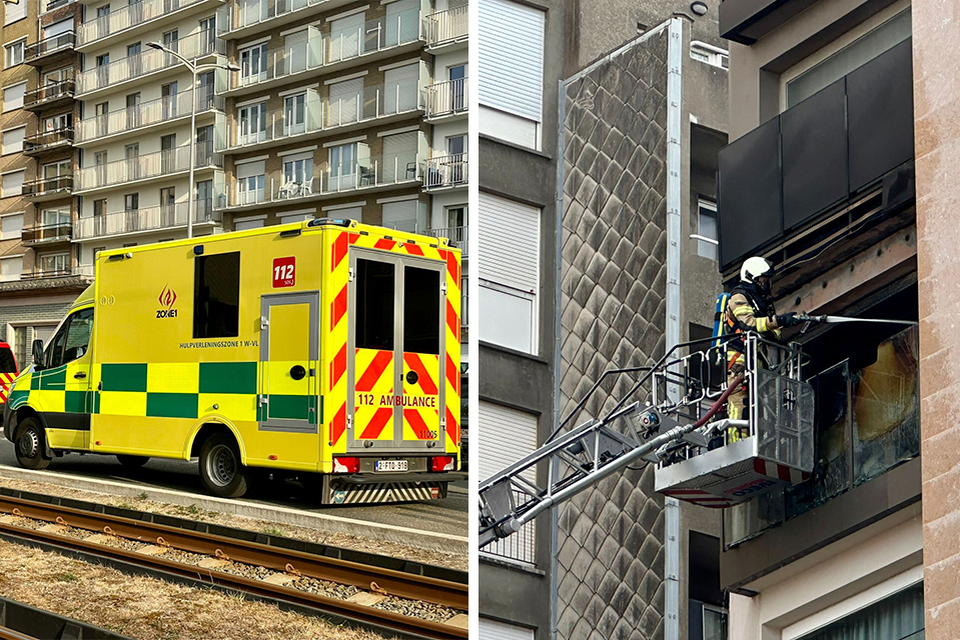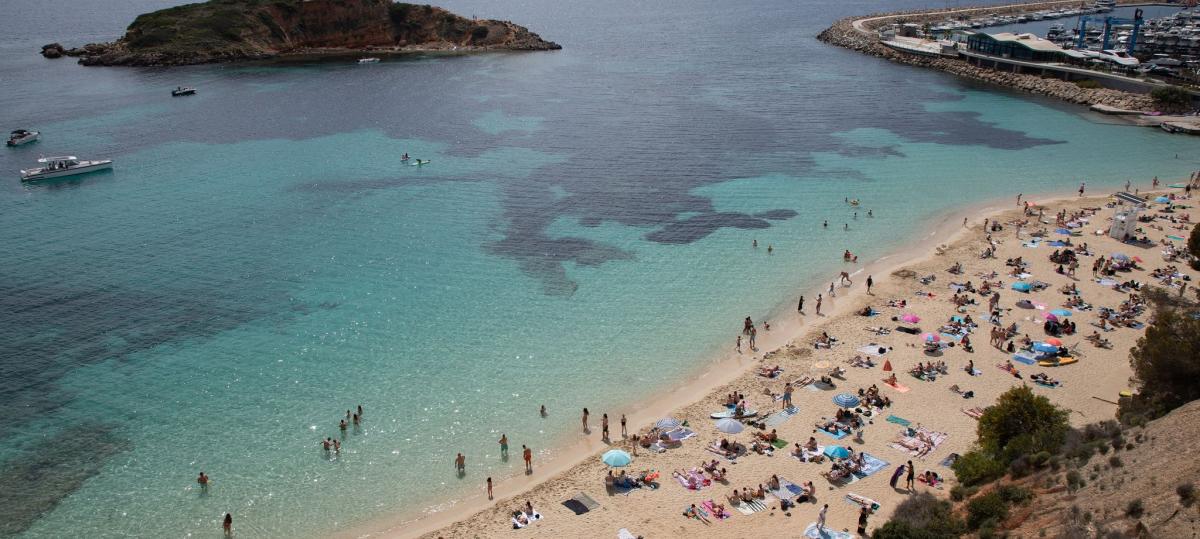In Sphinxkwartier, Maastricht, it quickly feels 14 degrees warmer than in the rest of the city
:format(webp)/s3/static.nrc.nl/images/gn4/stripped/data74060444-16bfe3.png)
The Netherlands has a sea climate. But Maastricht is already a bit center Europe. It is often just a few degrees warmer than elsewhere in the Netherlands. And within the city, heat strikes more in one place than on the other. The Sphinxkwartier, a former industrial district that is being developed into a neighborhood in which people live and work, is such a location that turns fire red in the summer on heat cards. If on very hot days in the coolest places in Maastricht the feeling temperature reach 38 degrees Celsius, it can feel more warmer in this neighborhood on the edge of the center.
Many of the residents have the idea that climate resistance did not have the highest priority, and have, in the part of the Sphinxkwartier that has been ready in recent years. Gea Dekkers bought a home here: « It seems to be mainly about the development of as many homes as possible in the area. » John Geelen, who rents a house there: « And underground parking spaces, including those for the many visitors to Maastricht, are also a revenue model. » Due to its construction, trees cannot root. In the inner gardens of the various complexes, many of them in the hands of investors or associations of owners, you can still find green. But many streets in the now completed southern half of the Sphinxkwartier look like a stone desert and look with only a handful of trees in little on the Artist Impressions From the leaflets of a few years ago, who promised plenty of vegetation and « overcooling green ».
Read also
Also read: With a little help, the heat can be chased out of the city
On Monday it is Heat Action Day, a day when the International Red Cross draws attention to the threat of extreme heat and what can be done to reduce it. Numerous activities are also being organized in the Netherlands to bring the subject to the attention. We will suffer more from the increasing heat in the coming years. Residents of cities the most, with children, the elderly and chronically ill as the most vulnerable groups.
Good intentions
The climate adaptation strategy 2023-2027 of the municipality of Maastricht cannot possibly be the cause of the few greenery in the public space of the Sphinxkwartier. It is full of good intentions: biodiversity and consciousness of climate adaptation must be larger, the number of square meters covered with vowels, tiles and asphalt must be lowered, Maastricht deserves greening and the entire city more trees.
But the residents often heard what was not possible. Geelen: « They are always talking about parking garages, pipes and cables. Roots of trees and bushes would break too much. And the industrial past is also cited. »
History also appears to be an argument. The Sphinxkwartier is rising in the area where with the earthenware factories of Peter Regout (later Sphinx) the industrialization of the Netherlands began almost two centuries ago. « Because there was not much green in the time of the factories, there should not be too much now. The spirit of that time must linger here. »
/s3/static.nrc.nl/images/gn4/stripped/data133100487-d985b8.jpg|https://images.nrc.nl/FhOu2Psb6jSjQ7wa7WcrXw9Y6ns=/1920x/filters:no_upscale()/s3/static.nrc.nl/images/gn4/stripped/data133100487-d985b8.jpg|https://images.nrc.nl/1g3QjttZ3rQuDIvuUhZpb0ebu7s=/5760x/filters:no_upscale()/s3/static.nrc.nl/images/gn4/stripped/data133100487-d985b8.jpg)
Photo Chris Keulen
Through the citizen budget, part of the municipal budget that is made available for the execution of ideas of citizens, the residents saw an opening to get their neighborhood more heat -resistant. « We submitted a detailed plan, » says Dekkers. Many more trees and other greenery in the open ground. Only tree bins where there is no other way. More facade gardens. « In the end we were only assigned 10,000 euros for three large green trays. » In order to get the municipality enthusiastic about the wider plan, there was a Sphinx residents’ initiative must be greener. Dekkers, who became chairman: « We collected three hundred signatures. » Geelen, member of the Sphinx core team must be greener: « A much smaller group of residents offers resistance, especially because we also proposed one -way traffic in the context of road safety. » The initiative also focuses on quality of life; With attention to children’s playgrounds, road safety, meeting places on the street. The resistance also came from a few who are wary of trees because of leaf and shade, and because they attract birds (bird droppings, sound, falling twigs).
Many streets look like the artist impressions, who promised plenty of vegetation and ‘overdrawing green’
Facade gardens
Responsible alderman Frans Bastiaens (seniors party Maastricht, urban development and resilient neighborhoods) was not available for comment in recent days. In a council information letter of 20 February this year, he announced the relocation of five tree bins from elsewhere to the rather stony Dr. Frans Fouquetstraat. In addition, there will be new bins and – if cables, pipes and other things in the soil are not an impediment – also two trees in the open ground.
According to Bastiaens there is also room for facade gardens. The streets are wide enough to keep five meters on a roadway for motorized traffic. « The fact that the façade gardens should not become too large also has to do with rules, » laughs Geelen. « From a centimeter or 75 they become gardens and then not the residents but the municipality have maintenance obligation. »
Sphinx must be greener at any time, the elaboration of the municipal adjustment plans. The residents’ initiative can then submit its opinion.
In the coming years in Maastricht, in addition to building the northern part of the Sphinx quarter, an extra challenge in the field of heat stress is planned. In the Sint-Pietersberg, by almost a century marl extraction was created by the first Dutch cement industry (ENCI) a ‘hollow molar’ as large as the city center of Maastricht. That area is now being re -used, including for the realization of homes. Due to its sheltered location, it can be 5 to 6 degrees warmer in the cavity of the mountain than elsewhere in and around the city. As a result, there are plant and animal species that we don’t see anywhere else in the Netherlands. But how livable are those temperatures and the almost absent wind for future human residents? The ENCI area is already the largest deep red spot on the Hittekaart van Maastricht.
Read also
Also read: On to a heat -resistant city

:format(webp)/s3/static.nrc.nl/images/gn4/stripped/data58469998-1192e2.jpg)
/s3/static.nrc.nl/images/gn4/data133142838-c622dd.jpg)
/s3/static.nrc.nl/images/gn4/data133150351-eec07f.jpg)





